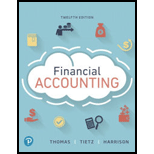
Concept explainers
LO 1, 2
(Learning Objectives 1, 2: Show how to account for inventory in a perpetual system using the average-costing method) Eastern Trading Company purchases inventory in crates of merchandise; each crate of inventory is a unit. The fiscal year of Eastern Trading ends each January 31. Assume you are dealing with a single Eastern Trading store in San Diego, California. The San Diego store began the year with an inventory of 24,000 units that cost a total of $1,272,000. During the year, the store purchased merchandise on account as follows:
| Jul (29,000 units at $55) ...................................... | $1,595,000 |
| Nov (49,000 units at $59) .................................... | 2,891,000 |
| Dec (59,000 units at $65) .................................... | 3,855,000 |
| Total purchases .................................................... | $8,321,000 |
Cash payments on account totaled $7,993,000. During fiscal year 2018, the store sold 149,000 units of merchandise for $15,272,500, of which $4,700,000 was for cash and the balance was on account. Eastern Trading and all of its stores use the average-cost method for inventories. The San Diego store’s operating expenses for the year were $4,250,000. It paid 70% in cash and accrued the rest as accrued liabilities. The store accrued income tax at the rate of 40%.
Requirements
1. Make summary
2. Prepare a T-account to show the activity in the Inventory account.
3. Prepare the store’s income statement for the year ended January 31, 2018. Show totals for gross profit, income before tax, and net income.
Want to see the full answer?
Check out a sample textbook solution
Chapter 6 Solutions
Financial Accounting, Student Value Edition (12th Edition)
 Financial AccountingAccountingISBN:9781337272124Author:Carl Warren, James M. Reeve, Jonathan DuchacPublisher:Cengage Learning
Financial AccountingAccountingISBN:9781337272124Author:Carl Warren, James M. Reeve, Jonathan DuchacPublisher:Cengage Learning
